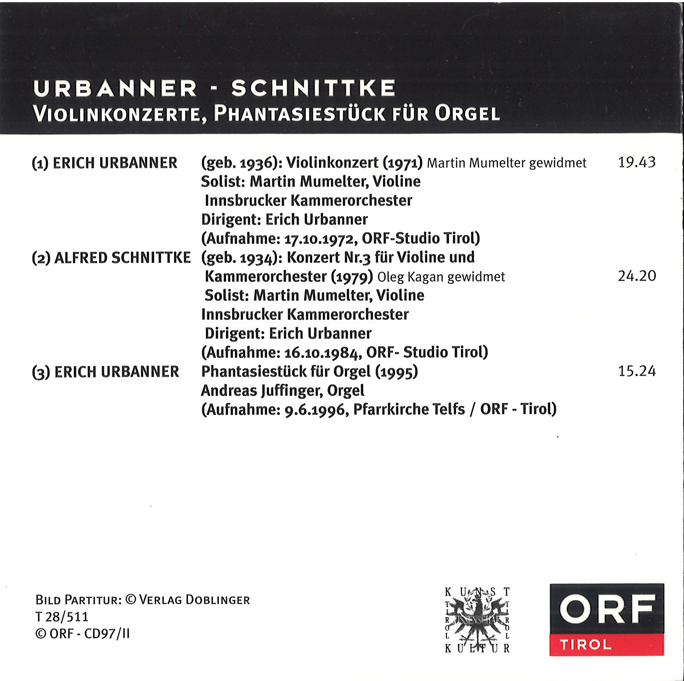Alfred Schnittke: 3rd Violin Concerto and Urbanner, Violin Concerto. (First Recording)
Alfred Schnittke: 3rd Violin Concerto and Urbanner, Violin Concerto. (First Recording before the Premier)
Innsbruck Chamber Orchestra/Erich Urbanner
Thank you very much for your wonderful performance! Please be so kind and extend my thanks to Mr. Urbanner, whom I hold in high esteem as a composer and conductor. Yours sincerely, Alfred Schnittke
Urbanner and I had found a frightening amount of typos and ambiguities in the sheet music of the Schnittke concert and were forced to find solutions and make decisions on our own. Via an adventurous path, with the help of the young Hagen Quartet and Gidon Kremers, who was able to cross the Iron Curtain unhindered, our recording was played to the isolated composer in Moscow. The answer came back the same way. Schnittke told me in handwriting, painstakingly put on paper line by line after a stroke, we had gotten it right all around. And he shared moving words about our interpretation.
I later recorded the work for the Bayerischer Rundfunk with the Bamberg Symphony Orchestra and tried to implement Schnittke’s additional wishes.
Urbanner’s concert is dedicated to me, details can be found in the booklet of the recording with the RSO Vienna. I have recorded the work several times and performed it even more often, among others with the Staatskapelle Berlin, the Symphonieorchester des Bayerischen Rundfunks, the Mozarteumorchester Salzburg, the Orchestra of Radio Luxemburg, mostly conducted by the composer. It was interesting to experience how differently the orchestras dealt with the musical text and the improvisational challenges it contained. The recording with the RSO Vienna is currently available on CD, which documents the invaluable acoustics of the Großer Musikvereinssaal as well as the lively interpretive power of the conductor Caridis.
He suggested that the composer rewrite the partially graphic score in conventional notation in order to simplify the rehearsal work. Urbanner took my interpretation of the solo part as a starting point and actually rewrote the entire score, the publisher produced the entire material anew. “I could subsequently express the work in conventional notation,” the composer said, “but I could never have invented it in it.”
Dealing with both notations and their implementation gives a lot of insight into the relationship between written and audio music and the exciting problems associated with it.



